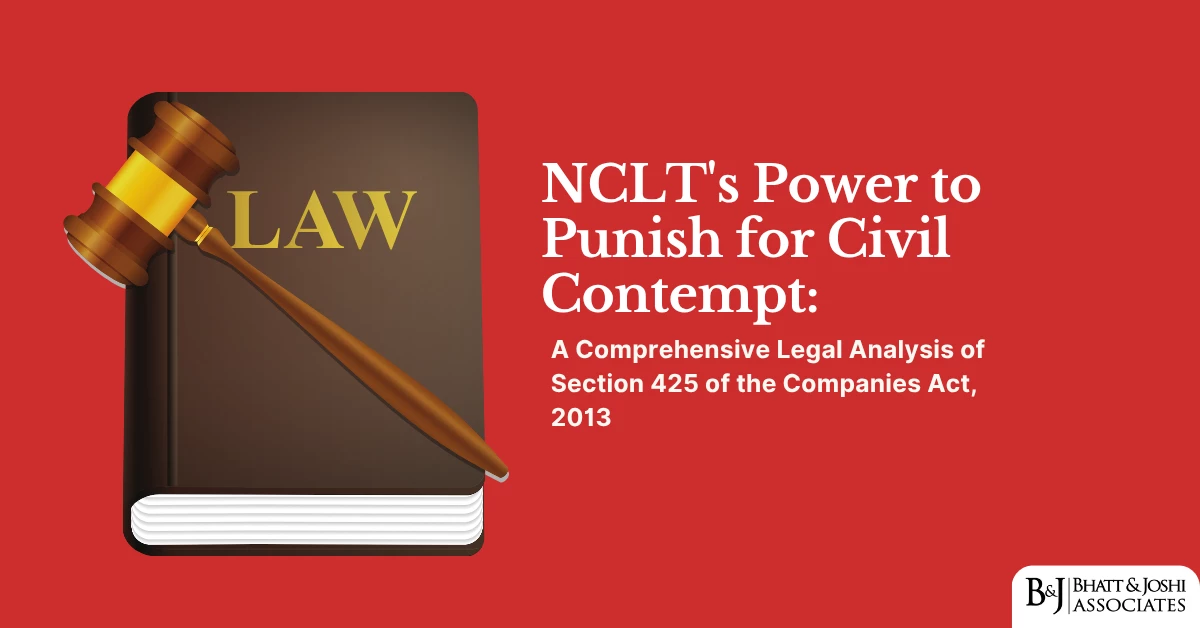Introduction
Mutual funds are investment vehicles that pool money from many investors to buy stocks, bonds, and other securities. They allow ordinary people to access professional investment management even with small amounts of money. In India, mutual funds are regulated by the SEBI (Mutual Funds) Regulations, 1996.
These regulations provide the rules for how mutual funds should be set up, managed, and operated in India. They cover everything from registration requirements to investment restrictions, from fee structures to disclosure standards. The goal is to protect investors while allowing the mutual fund industry to grow.
The regulations have created a structure where mutual funds are organized as trusts, managed by Asset Management Companies (AMCs), and overseen by trustees. This three-tier structure helps ensure that the money invested by people is handled properly and in their best interests.
Since 1996, the regulations have been amended multiple times to address new challenges and opportunities in the investment landscape. These changes have helped make mutual funds one of the most popular investment options for Indians today, with the industry managing over 37 lakh crore rupees as of 2023.
Historical Development and Regulatory Evolution of India’s Mutual Fund Industry
The mutual fund industry in India began in 1963 with the establishment of Unit Trust of India (UTI), which had a monopoly for almost three decades. UTI was set up by an Act of Parliament and was not regulated by SEBI initially.
In 1987, public sector banks and insurance companies were allowed to set up mutual funds, bringing some competition to the industry. Then in 1993, private sector mutual funds were permitted, leading to rapid growth and diversification in the industry.
Before 1996, mutual funds were regulated by guidelines issued by the Ministry of Finance and later by SEBI. These guidelines were not comprehensive and lacked the legal strength of formal regulations. There was a need for a stronger regulatory framework as the industry grew.
The SEBI (Mutual Funds) Regulations, 1996, filled this gap by providing a comprehensive regulatory framework. They consolidated and replaced earlier guidelines, creating a level playing field for all mutual funds, whether public sector or private sector.
The early 2000s saw a significant test for these regulations when US-64, a popular scheme from UTI, faced a crisis. This led to UTI being split into two parts, with one part coming under SEBI regulations. This episode highlighted the importance of strong regulation and transparency in the mutual fund industry.
Another important milestone was the abolition of entry loads (upfront commissions) in 2009, which was a major step towards reducing the cost of investing in mutual funds. This was followed by other investor-friendly measures like the categorization of schemes in 2017 to reduce confusion for investors.
The regulations have evolved from focusing mainly on registration and basic operations to addressing more complex issues like risk management, investor protection, and governance. This evolution reflects the growing maturity and sophistication of India’s mutual fund industry.
Mutual Fund Registration Process and Criteria
Chapter II of the SEBI (Mutual Funds) Regulations, 1996 deals with the registration process for mutual funds. This is the first step in establishing a mutual fund in India and ensures that only qualified entities enter this business.
Regulation 7 sets out the eligibility criteria for an entity seeking to sponsor a mutual fund. These include a sound track record of at least 5 years in financial services, positive net worth in all the immediately preceding 5 years, and net profit in at least 3 of the immediately preceding 5 years.
The application for registration must include detailed information about the sponsor, the proposed trustees, the Asset Management Company, and the custodian. SEBI examines these details carefully to ensure that the proposed mutual fund has adequate resources, expertise, and systems.
Regulation 7(3) explicitly states: “The applicant shall be a fit and proper person.” This means SEBI assesses not just financial criteria but also the integrity and reputation of the applicant. Any history of regulatory violations or fraud can lead to rejection of the application.
After reviewing the application, SEBI may grant a certificate of registration, which is valid permanently unless suspended or cancelled. The regulations allow SEBI to impose conditions while granting registration to ensure proper functioning of the mutual fund.
The registration requirements have helped ensure that only serious players with adequate resources and expertise enter the mutual fund industry. This has contributed to the stability of the industry and protected investor interests by keeping out fly-by-night operators.
Constitution and Management of Mutual Funds and AMCs
Chapter III of the SEBI (Mutual Funds) Regulations, 1996 establishes the structure for mutual funds in India, which follows a three-tier model: sponsors, trustees, and the Asset Management Company (AMC).
The sponsor is the entity that establishes the mutual fund. According to Regulation 10, the mutual fund must be established as a trust under the Indian Trusts Act, 1882, with the sponsor acting as the settlor of the trust. This creates a legal separation between the mutual fund and its sponsor.
The trust is governed by trustees who have a fiduciary responsibility to unit holders (investors). Regulation 18 states: “The trustees shall ensure that the activities of the mutual fund are in accordance with the provisions of these regulations.” This makes trustees the primary guardians of investor interests.
The actual investment management is done by an Asset Management Company (AMC) appointed by the trustees. Regulation 21 mandates that the AMC must have a net worth of at least Rs. 50 crore and must be approved by SEBI. The AMC works under the supervision of the trustees.
The regulations establish clear separation between these entities to avoid conflicts of interest. For example, the AMC must be a separate legal entity from the sponsor and must have at least 50% independent directors. Similarly, at least two-thirds of the trustees must be independent of the sponsor.
Regulation 24 prohibits the AMC from undertaking any business other than asset management without specific approval from SEBI. This ensures that the AMC focuses on its core function of managing investor money without distractions or conflicts from other businesses.
The regulations also require proper records of the meetings and decisions of trustees and the AMC board. These records must be made available to SEBI during inspections, ensuring transparency and accountability in decision-making.
Schemes of Mutual Funds
Chapter V of the SEBI (Mutual Funds) Regulations, 1996 deals with the different types of schemes that mutual funds can offer and the process for launching them. A scheme is a specific investment product offered by a mutual fund, like an equity fund or a debt fund.
Regulation 28 requires that every mutual fund scheme must be approved by the trustees and a copy of the offer document must be filed with SEBI. While SEBI doesn’t approve schemes in advance, it can ask for changes if it finds any issues with the scheme.
The regulations classify schemes into open-ended schemes (where investors can buy and sell units at any time) and close-ended schemes (which have a fixed maturity date). Different rules apply to each type to address their specific characteristics and risks.
For close-ended schemes, Regulation 33(1) states: “No scheme shall be launched with a maturity period of more than fifteen years.” This limits the time horizon of such schemes, though infrastructure funds and REITs can have longer durations with special approval.
The regulations also specify the process for launching new schemes, including preparing an offer document with all relevant information, appointing a collecting bank for receiving applications, and following specific timelines for opening and closing the offer.
In 2017, SEBI introduced a major reform by categorizing mutual fund schemes into specific categories like large-cap equity, small-cap equity, corporate bond, etc. This standardization has helped investors compare similar schemes across different mutual funds and reduced product proliferation.
Regulation 39 deals with the winding up of schemes, which can happen when the trustees believe it’s in the best interest of unit holders, when 75% of unit holders of a scheme pass a resolution for winding up, or when SEBI directs the mutual fund to wind up in the interest of investors.
Investment Objectives and Valuation Policies
Chapter VII of the SEBI (Mutual Funds) Regulations, 1996 sets out the rules for investments by mutual funds. These rules are designed to ensure that mutual funds invest prudently and in line with their stated objectives.
Regulation 43 requires that investments by mutual funds must be in transferable securities in the money market or capital market, privately placed debentures, securitized debt instruments, gold or gold-related instruments, real estate assets, and infrastructure debt instruments.
The regulations impose concentration limits to prevent mutual funds from taking excessive risks. For example, a mutual fund scheme generally cannot invest more than 10% of its assets in a single company’s securities, and not more than 15% in a group of companies under the same management.
Regulation 44(1) states: “A mutual fund may invest in the securities of an overseas issuer in accordance with the guidelines issued by the Board in this regard.” This allows mutual funds to diversify internationally, but under guidelines to manage the additional risks of overseas investments.
The regulations require proper valuation of securities held by mutual funds. According to Regulation 47, mutual funds must ensure that the purchase or sale of securities is effected at a fair price, and investments must be valued according to principles established by SEBI.
In 2021, SEBI introduced significant changes to the valuation norms, particularly for debt securities. These changes were prompted by episodes like the Franklin Templeton crisis and aimed at ensuring more accurate valuation of debt instruments, especially in stressed market conditions.
Mutual funds must disclose their valuation policies in their offer documents and follow these policies consistently. Any deviation must be reported to the trustees with justification. This ensures transparency and prevents arbitrary valuation changes that could harm some investors.
Restrictions on Business Activities
Chapter VI of the SEBI (Mutual Funds) Regulations, 1996 imposes various restrictions on mutual fund business activities to protect investor interests and prevent conflicts of interest. These restrictions apply to both the mutual fund itself and the AMC that manages it.
Regulation 42 prohibits mutual funds from borrowing except for meeting temporary liquidity needs, and even then, borrowing is limited to 20% of the net assets of the scheme and for a maximum period of six months. This prevents mutual funds from taking on excessive leverage.
The regulations prohibit mutual funds from investing in other mutual funds, underwriting issues of securities, and lending or guaranteeing loans. These restrictions prevent mutual funds from engaging in activities that could create conflicts with their primary duty of managing investor money.
Regulation 25 restricts transactions between mutual funds, schemes of the same mutual fund, and associates or group companies of the sponsor or AMC. Such transactions are allowed only when they are done on an arm’s length basis and in the interest of unit holders.
The AMC and its employees are prohibited from receiving any kickbacks or undue benefits in connection with investments made by the mutual fund. This prevents conflicts of interest that might lead to investment decisions that benefit the AMC but harm investors.
Regulation 24(b) states: “The asset management company shall not act as a trustee of any mutual fund.” This separation of roles ensures proper checks and balances in the mutual fund structure, with the trustee supervising the AMC.
The regulations also impose strict limits on investments in unlisted securities, derivatives, and other complex instruments. These limits are designed to ensure that mutual funds maintain a reasonable risk profile appropriate for retail investors.
Landmark Cases Shaping SEBI Mutual Fund Regulations
Several important cases have helped shape the interpretation and application of the Mutual Funds Regulations. These cases provide guidance on how the regulations work in practice and how SEBI exercises its regulatory authority.
The Franklin Templeton Trustee Services v. SEBI (2021) case was a watershed moment for the industry. In April 2020, Franklin Templeton suddenly announced the winding up of six debt schemes, locking in investor money during the COVID-19 pandemic. This led to legal challenges from investors.
The Karnataka High Court ruled that the decision to wind up required unit holder approval, contrary to Franklin’s interpretation of Regulation 39. The court stated: “The power of trustees to wind up schemes under Regulation 39(2)(a) is not unilateral and requires consent of unit holders.” This was a significant ruling clarifying investor rights in winding up situations.
The Unit Trust of India v. SEBI (2002) case dealt with SEBI’s regulatory jurisdiction over UTI, which was established by a separate Act of Parliament. The Supreme Court ruled that SEBI had jurisdiction over all mutual funds, including UTI, under the SEBI Act.
The Court noted: “The SEBI Act is a special statute and the regulatory control of all mutual funds, including UTI, vests with SEBI. The UTI Act does not exclude the application of other regulatory laws.” This case helped establish SEBI’s comprehensive authority over the mutual fund industry.
The Sahara Asset Management Company v. SEBI (2015) case involved SEBI’s power to cancel the registration of a mutual fund. SEBI had cancelled Sahara Mutual Fund’s registration due to its sponsor’s failure to meet “fit and proper person” criteria following regulatory violations by other Sahara group companies.
The SAT upheld SEBI’s order, stating: “SEBI has wide powers to take action in the interest of investors, and the ‘fit and proper person’ criteria must be satisfied on a continuous basis, not just at the time of initial registration.” This affirmed SEBI’s authority to enforce high standards of conduct in the industry.
The HDFC Asset Management Company v. SEBI (2017) case dealt with requirements for scheme changes. HDFC AMC had changed the fundamental attributes of a scheme without giving exit options to investors as required by Regulation 18(15A).
The SAT ruled: “Any change in the fundamental attributes of a scheme requires giving unit holders an exit option at prevailing NAV without exit load. This is a mandatory requirement that cannot be circumvented.” This case reinforced investor rights regarding scheme changes.
Evolution of Mutual Fund Industry Under SEBI Regulation
The Mutual Funds Regulations have played a crucial role in shaping India’s asset management industry over the past 25 years. The industry has grown from managing just a few thousand crores in 1996 to over 37 lakh crore rupees today.
In the early years after the regulations were introduced, the focus was on establishing basic regulatory standards and creating a level playing field for public and private sector mutual funds. This period saw the entry of many new players, including foreign asset managers.
The early 2000s saw increased focus on disclosure standards and investor education. SEBI mandated standardized fact sheets, risk-o-meters, and other investor-friendly disclosures. These measures helped increase transparency and build investor confidence in mutual funds.
The mid-2000s witnessed rapid growth in equity mutual funds as the stock market boomed. The regulations were amended to address new challenges like the growth of systematic investment plans (SIPs) and the need for better risk management practices.
A significant shift came in 2009 when SEBI abolished entry loads, which were upfront commissions of up to 2.25% charged to investors. This bold move reduced the cost of investing in mutual funds and aligned the interests of distributors more closely with long-term investor outcomes.
The 2010s saw increased regulation of distributor practices, introduction of direct plans (without distributor commissions), and clearer categorization of schemes. These changes made it easier for investors to understand and compare different mutual fund products.
Recent years have seen a focus on risk management, particularly in debt funds following episodes like the IL&FS crisis and the Franklin Templeton case. SEBI has introduced stricter liquidity norms, stress testing requirements, and valuation guidelines to make debt funds safer.
The regulations have evolved from focusing mainly on registration and basic operations to addressing more complex issues like risk management, investor protection, and governance. This evolution reflects the growing maturity and sophistication of India’s mutual fund industry.
Impact of Regulatory Framework on Investor Protection
Investor protection is a core objective of the Mutual Funds Regulations, and several provisions directly address this goal. These measures have helped build trust in mutual funds as an investment avenue for ordinary Indians.
The three-tier structure of mutual funds (sponsor, trustee, AMC) creates multiple layers of oversight. Trustees have a fiduciary duty to unit holders and must ensure that the AMC acts in their best interest. This structure puts investor interests at the center of mutual fund governance.
The regulations require extensive disclosure of information to investors. Mutual funds must publish scheme information documents, key information memorandums, annual reports, and regular portfolio disclosures. This transparency helps investors make informed decisions.
Regulation 77 mandates: “Every mutual fund shall compute and carry out valuation of its investments in accordance with the valuation norms specified in the Eighth Schedule.” This ensures fair valuation of assets and equitable treatment of entering, existing, and exiting investors.
The regulations limit mutual fund expenses through Total Expense Ratio (TER) caps. These caps were revised downward in 2018, particularly for larger funds, reducing the cost burden on investors. Lower expenses directly translate to better returns for investors over the long term.
SEBI has introduced several investor-friendly measures over the years, such as risk-o-meters to visually represent a scheme’s risk level, standardized scheme categorization, and instant redemption facilities in liquid funds. These measures have made mutual funds more accessible and understandable.
The regulations require mutual funds to handle investor complaints promptly and have proper grievance redressal mechanisms. SEBI monitors complaint resolution closely and can take action against mutual funds that fail to address investor grievances satisfactorily.
In 2020, SEBI introduced side pocketing provisions, allowing mutual funds to separate troubled assets from the main portfolio. This protects the interests of existing investors while providing a fair mechanism for recovery if the troubled assets eventually perform better.
Analysis of Distribution Practices
The distribution of mutual funds in India has evolved significantly under SEBI’s regulatory framework. The regulations have progressively addressed conflicts of interest and misaligned incentives in the distribution ecosystem.
Before 2009, mutual funds charged entry loads (upfront commissions) of up to 2.25% from investors, which were paid to distributors. This created an incentive for distributors to churn portfolios and sell funds based on commissions rather than investor needs. SEBI’s bold decision to abolish entry loads in 2009 was a watershed moment for the industry.
Regulation 76 now prohibits upfront commissions and allows only trail commissions that are paid as long as the investor remains invested. This aligns distributor incentives with investor success and encourages long-term investing rather than frequent switching.
In 2012, SEBI introduced direct plans that allow investors to buy mutual funds directly from AMCs without going through distributors. Direct plans have lower expense ratios since they don’t include distributor commissions. This has created a low-cost option for informed investors.
The regulations require mutual funds to disclose commissions paid to distributors in the half-yearly consolidated account statements sent to investors. This transparency helps investors understand how much they are paying for distribution services.
SEBI has also introduced certification requirements for mutual fund distributors. Distributors must pass a certification test conducted by the Association of Mutual Funds in India (AMFI) and follow a code of conduct. This has helped improve the quality of advice given to investors.
The regulations have been particularly focused on preventing mis-selling of mutual funds. SEBI has introduced concepts like appropriateness and risk profiling to ensure that distributors recommend products suitable for the investor’s needs and risk appetite.
Recent regulatory focus has been on addressing conflicts in the online distribution space, where many platforms receive commissions from AMCs while appearing to offer “free” services to investors. SEBI has mandated clearer disclosure of such arrangements to ensure transparency.
Comparative Study with Global Asset Management Regulations
India’s mutual fund regulations have both similarities and differences compared to regulatory frameworks in other major markets. These comparisons provide perspective on the strengths and unique features of India’s approach.
The US regulates mutual funds primarily through the Investment Company Act of 1940. Like India, the US has a strong focus on disclosure and transparency. However, the US allows mutual funds to be structured as corporations rather than trusts, giving investors voting rights on certain matters.
The US has a concept of “independent directors” who must form at least 40% of a fund’s board, similar to India’s requirement for independent trustees. However, the US system places more governance responsibilities on the fund board itself, while India’s three-tier structure divides these responsibilities.
The European Union’s regulatory framework is based on the Undertakings for Collective Investment in Transferable Securities (UCITS) Directive. Like India, the EU emphasizes investor protection through investment restrictions and risk management requirements. However, UCITS allows more flexibility in fund structures and distribution across borders.
The UK’s regulatory approach focuses heavily on the “conduct of business” rules for asset managers, emphasizing their fiduciary duty to clients. This is similar to India’s focus on the obligations of AMCs and trustees, though India’s rules are more prescriptive in many areas.
India’s regulatory framework is more restrictive regarding investment options compared to some developed markets. For example, alternative investment strategies like short-selling and leveraged funds, which are common in the US and Europe, are more limited in India.
India’s expense ratio caps are more prescriptive than many global markets, where competition rather than regulation often determines fee levels. This reflects India’s focus on keeping mutual funds affordable for retail investors who may not have the bargaining power of institutional investors.
A unique aspect of India’s regulations is the emphasis on standardized categorization of schemes, which helps investors compare similar funds across different AMCs. This level of standardization is not as common in other markets, where fund naming and categorization can be more varied.
Current Challenges and Future Outlook
Despite its growth and maturity, India’s mutual fund industry faces several challenges that may shape future regulatory developments. These challenges reflect both market realities and evolving investor needs.
Penetration of mutual funds in India remains low compared to developed markets. Only about 3% of India’s population invests in mutual funds, compared to much higher percentages in countries like the US. Future regulatory changes may focus on simplifying products and processes to reach more investors.
The disparity between equity and debt markets poses challenges for balanced portfolio management. While equity markets are deep and liquid, the corporate bond market remains relatively underdeveloped. This limits diversification options for mutual funds, especially in fixed income.
Technology is transforming how mutual funds are distributed and managed. The regulations will need to evolve to address issues like robo-advisory services, digital onboarding, and the use of artificial intelligence in investment management. SEBI has already introduced an Innovation Sandbox to test new technologies in a controlled environment.
Regulation 28 may need updating to accommodate innovative investment strategies and instruments. As global investment landscapes evolve, Indian mutual funds may seek more flexibility to offer products like ESG (Environmental, Social, Governance) focused funds, thematic investments, and alternative strategies.
The Franklin Templeton episode highlighted liquidity management challenges in debt funds, especially for less liquid corporate bonds. Future regulatory changes may focus on strengthening liquidity risk management frameworks and stress testing requirements.
Investor education remains a challenge, with many investors still lacking basic understanding of mutual fund concepts like NAV, expense ratios, and different fund categories. SEBI and the industry will need to continue their focus on financial literacy initiatives.
As passive investing grows in India, regulations may need to address specific aspects of index funds and ETFs, such as tracking error limits, index construction, and market making mechanisms. These are currently covered by general mutual fund regulations but may require more targeted approaches.
Conclusion
The SEBI (Mutual Funds) Regulations, 1996, have been instrumental in shaping India’s asset management industry over the past 25 years. They have created a robust framework that balances investor protection with industry growth and innovation.
From humble beginnings in 1996, the mutual fund industry has grown into a cornerstone of India’s financial system, channeling household savings into productive investments in the economy. This growth has been facilitated by the clarity and stability provided by the regulatory framework.
The regulations have evolved continuously to address emerging challenges and opportunities. From basic registration requirements in the early years to sophisticated risk management frameworks today, SEBI has demonstrated its commitment to keeping the regulations relevant and effective.
Investor protection has been at the heart of these regulations. The trustee-AMC structure, investment restrictions, disclosure requirements, and expense caps all serve to safeguard investor interests. These protections have helped build trust in mutual funds as an investment avenue for ordinary Indians.
The distribution landscape has been transformed by regulatory interventions like the abolition of entry loads, introduction of direct plans, and focus on distributor conduct. These changes have made the industry more investor-friendly and reduced conflicts of interest.
Recent episodes like the Franklin Templeton case have tested the regulatory framework and led to further strengthening of investor protections. SEBI’s willingness to learn from such episodes and update regulations accordingly is a positive sign for the long-term health of the industry.
Looking ahead, the regulations will need to continue evolving to address emerging challenges like technology disruption, new investment strategies, and the need for greater financial inclusion. SEBI’s consultative approach to regulation suggests that it will engage with industry and investors to find balanced solutions.
For investors, the mutual fund regulations provide a safety net that makes investing in mutual funds less risky than direct investment in securities. Understanding these regulations can help investors make more informed choices and better appreciate the safeguards that protect their investments.
References
- Securities and Exchange Board of India. (1996). SEBI (Mutual Funds) Regulations, 1996. Gazette of India.
- Securities and Exchange Board of India. (2021). Amendment to SEBI (Mutual Funds) Regulations, 1996. SEBI Circular dated October 5, 2021.
- Securities and Exchange Board of India. (2017). Categorization and Rationalization of Mutual Fund Schemes. SEBI/HO/IMD/DF3/CIR/P/2017/114.
- Karnataka High Court. (2020). Franklin Templeton Trustee Services v. SEBI & Ors. WP No. 8120/2020.
- Supreme Court of India. (2002). Unit Trust of India v. SEBI. (2002) 3 SCC 429.
- Securities Appellate Tribunal. (2015). Sahara Asset Management Company v. SEBI. SAT Appeal No. 178/2015, Order dated October 28, 2015.
- Securities Appellate Tribunal. (2017). HDFC Asset Management Company v. SEBI. SAT Appeal No. 213/2016, Order dated March 15, 2017.
- SEBI Annual Report 2020-21. Chapter on Mutual Funds and Collective Investment Schemes.
- Association of Mutual Funds in India. (2021). Mutual Fund Industry Data as of March 2021.
- Balasubramanian, N., & Sane, R. (2019). “Evolution of Mutual Fund Regulation in India.” In Handbook of Finance in Emerging Markets (pp. 201-223). Oxford University Press.
- Reserve Bank of India. (2021). Report on Trend and Progress of Banking in India 2020-21. Chapter on Mutual Funds and Other Financial Intermediaries.
- Krishnan, V. (2020). “Impact of SEBI’s Mutual Fund Regulations on Investor Protection: An Empirical Study.” Journal of Securities Market Regulation, 15(2), 67-89.
- Securities and Exchange Commission. (1940). Investment Company Act of 1940. United States Code.
- European Parliament and Council. (2009). Directive 2009/65/EC (UCITS IV Directive).
- Sadhak, H. (2021). “Current Challenges and Future Direction of India’s Mutual Fund Industry.” Indian Institute of Banking and Finance Journal, 17(3), 112-127.














